#Kobus kob
Explore tagged Tumblr posts
Photo

Kob (Kobus kob)
Family: Cattle Family (Bovidae)
IUCN Conservation Status: Least Concern
Found in scattered populations across western and central regions of Sub-Saharan Africa, Kob (singular and plural) inhabit flat, open habitats (often grasslands) in close proximity to water, where they feed almost entirely on well-hydrated grasses. While many antelopes are able to survive for extended periods of time without drinking both Kob and the grasses they eat require consistent access to water to survive, and as such herds of Kob undergo seasonal migrations in accordance with seasonal variation in rainfall - as the waterholes and rivers they rely on evaporate during the dry season migratory herds leave drier areas to travel to wetter ones. Migrating Kob herds are led by a large number (potentially thousands) of hornless females (which learn to navigate from their mothers,) while smaller groups made up entirely of horned adult males follow behind the females as they travel towards water. Upon arriving in areas with plentiful water and fresh grass (such as floodplains,) the large migratory herds disperse into several smaller groups; females and their young typically remain in groups of 5-40 while grazing, while adult males will adopt one of two forms of territorial behaviours depending on population density - if a large number of Kob are present at a single site males will establish “leks” made up of numerous small overlapping territories in which every male simultaneously competes for the attention of females, but if the population in the area is relatively small each male will claim a larger territory and will aggressively drive away any other nearby males (which is usually done solely through aggressive displays such as lowering of the horns, although if one male refuses to back away from the other they will slam their heads together and attempt to push their competitor back, typically resulting in the losing party fleeing.) Female Kob locate leks by detecting chemicals in the males’ urine that indicate reproductive maturity, and after a gestation period of around 9 months a female will give birth to a single calf which will stay by her side until reaching maturity between 13 and 18 months later (with males taking longer to reach full maturity than females.) As Kob are reliant on water-rich grazing areas to survive the establishing of farms in these areas has driven them out of parts of their former range, but there are hopes that the establishing of protected sites for the use of migrating Kob and the provision of alternate livelihoods for farmers with which they share their range may mitigate the damage done to their overall population.
--------------------------------------------------------------------------
Image Source: https://www.inaturalist.org/taxa/42330-Kobus-kob
#Kob#Kobus kob#antelope#antelopes#zoology#biology#mammalogy#ungulate#ungulates#animal#animals#wildlife#African wildlife#marine mammals#mammals
36 notes
·
View notes
Text

Uganda kob Kobus kob thomasi
Observed by patrickhaffner, CC BY-NC
35 notes
·
View notes
Text
Uncharismatic Fact of the Day
Most people don't like to be whistled at on the street, but for male kob antelope it's an essential part of attracting a mate! Males in their prime gather at a designated breeding ground, called a lek, and whistle to gather the attention of nearby females, who then chose a partner based on his fitness and ability to fight off rivals.
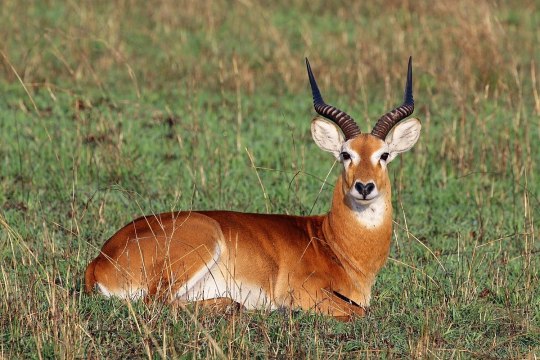
(Image: A male kob (Kobus kob) by Charles Sharp)
If you like what I do, consider buying me a ko-fi!
#kob#Artiodactyla#Bovidae#bovids#ruminants#even-toed ungulates#ungulates#mammals#uncharismatic facts
220 notes
·
View notes
Text

Ugandan Kobs in Murchison Falls National Park, Pakwach, Uganda
Sam Balye
Scientific name: Kobus kob thomasi
Conservation status: Least Concern (Population stable)
Class: Mammalia
Domain: Eukaryota
Family: Bovidae
Genus: Kobus
Kingdom: Animalia
The Ugandan kob is a subspecies of the kob, a type of antelope. It is found in sub-Saharan Africa in South Sudan, Uganda and the Democratic Republic of the Congo. The Ugandan kob is normally reddish-brown, differentiating it from other kob subspecies.
Ugandan kobs occur in South Sudan, to the west of the Nile, Uganda, and the north-eastern Democratic Republic of Congo. They live in open or wooded savanna, near water, and also in grasslands near rivers and lakes.
Ugandan kobs are herbivores and feed largely on grasses and reeds. The females and young males form loose groups of varying size which range according to food availability, often moving along watercourses and grazing in valley bottoms.
#Murchison Falls National Park#Pakwach#Uganda#Africa#National Park#Wildlife#UgandaWildlife#Ugandan Kob#Antelope
4 notes
·
View notes
Text
Antelope
Alrighty, I'd like y'all to imagine an antelope, envision it, NOW.
Good? Then continue.
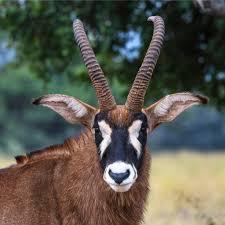
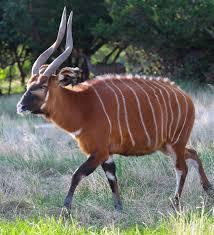
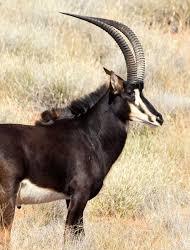
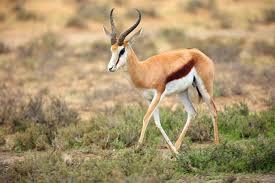
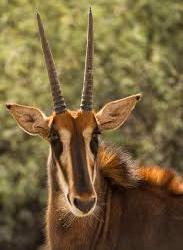
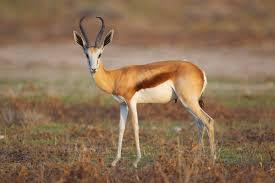
(Antelope overload)
Did you imagine a hoofed animal? Perhaps in grassy Africa? Grazing? Perchance, like the charming fellows above?
Well, all of the above are antelope! So what is 'antelope'? A family? An order even? No, and no, though, its related to a family in that it is a collection of genuses, but it's what's called a wastebasket taxon.
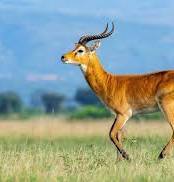
An antelope must be part of the family bovidae and NOT be a goat, sheep, or other cattle, the EXACT rules are a touch shaky because, well, antelope is (I believe) a polyphyletic grouping, meaning the group neither posses the common ancestor of all members of the group (which would be paraphyletic) or the common ancestor AND all descendents of that ancestor (which would be monophyletic, which makes something a true clade).
But there's still some meaning to the word, 91 entire species of antelope roam Africa, India, Central Asia, the Middle East, and even a small part of Eastern Europe.
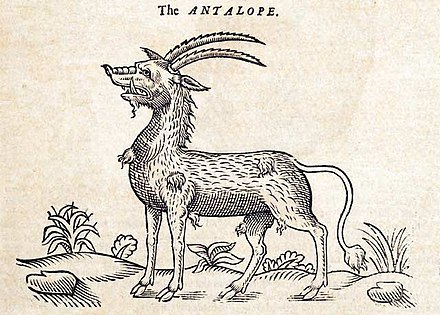
(Illustration from The History of Four-footed Beasts (1607))
In much of ye old Europe the antelope was strangely viewed as a mighty beast of prey, with horns of razor and the heart of a wolf.
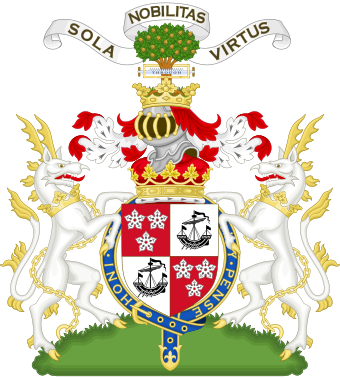
(Coat of arms of the Dule of Abercorn)
This design was used largely for heraldry, and still sticks around today, I think it looks neat.
Now, lets go over specific antelope, I've chosen based on very good reasons.
Best scientific name
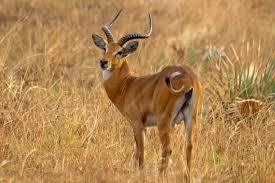
(A kob)
Some scientific names repeat themselves, such as Vulpes vulpes, those ones are easy to remember, some species names are used as a common name, such as Arcticitis binturong
Then you have...
THE KOBUS KOB, near perfection, the generic name is very similar to the species name, and the species name is also a major common name, tremendous bonus points because it sounds funny
Even more bonus points because there's a subspecies called the Kobus kob kob, perfection, no notes.
The littlest baby
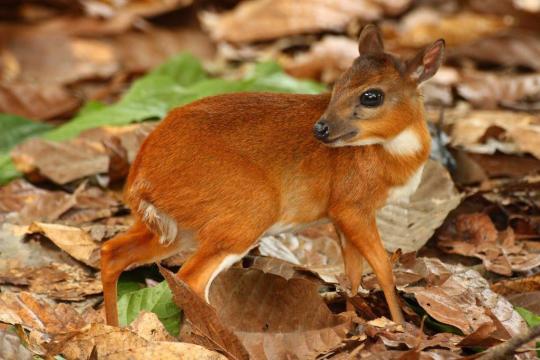
(So cute, squeeeee!)
The royal antelope, known scientifically as Neotragus pygmaeous, it's one of a large (unlike them, hehe) number of 'dwarf antelope' but the royal antelope is the littlest among them.
Standing up to 10 inches (25 cm) tall and weighing in at (at the upper end) 6.6 lb (3 kg), that footlong hotdog you had for lunch is longer than this lad is tall!
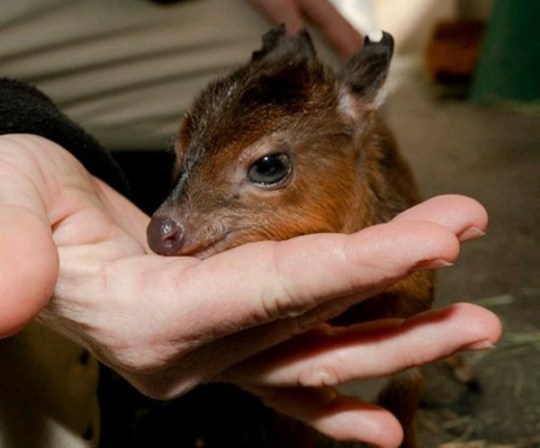
(A wittle baby royal antelope)
Little is known about these jungle-dwelling cuties, they mysteriously wander hidden in foliage.
The weirdest
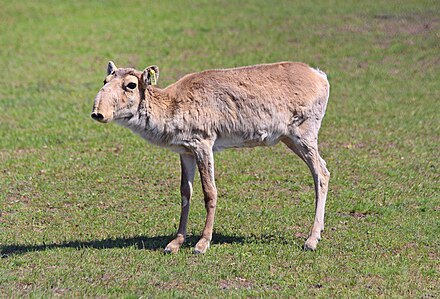
(Such a silly guy!)
The saiga (Saiga tatarica) I mean, just look at him! This antelope lives mostly in Russia, making it an oddity in geographic location too!
Their strange downward curved nose is mysterious, and seems to serve many purposes, keeping warm, filtering out dust they inhale, and, of course, an amazing sense of smell!
They even communicate with loud nasally roars!
The most antelope-y
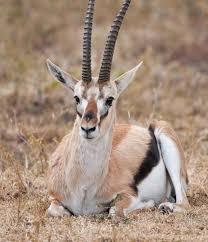
(Such antelope, much cute)
Thomson's gazelle (Eudorcas thomaonii) will always be the masoct of antelopes, the true antelope, to me.
It's still exceptional though, the fourth fastest land animal, running up to 50-55 MPH (80-90 KM/H) cheetahs (the fastest land animal) are their main predator. They're also sometimes called tommies!
The biggest baby
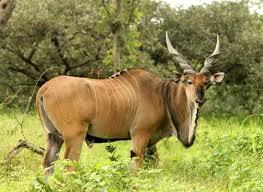
(They tall)
The fittingly names giant eland (Taurotragus derbianus)!
Standing between 7.19 and 9.55 feet (219 and 291 cm) tall, females weighing between 660 and 1320 pounds (300 a and 600 kg) and the larger males weighing from 880 up to 2650 pounds (400 to 1200 kg)!
My Favorite!
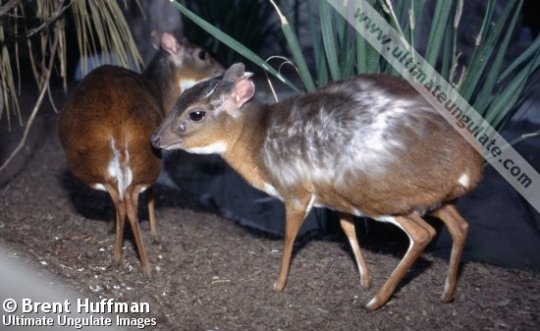
Yes, that's the royal antelope, it was love at first sight, okay? They're perfect! The saiga and Thomson's gazelle are the runner ups.
The most threatened
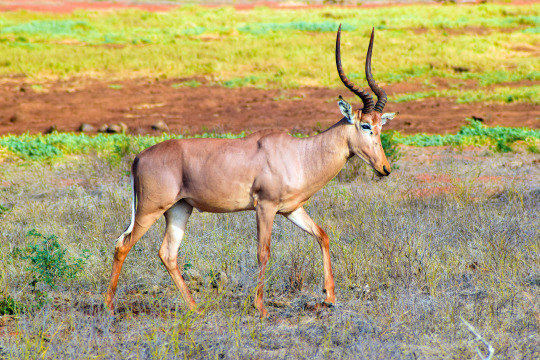
Sadly, there are several terribly threatened antelope, the hirola, or Beatragis hunteri is the worst off, considered critically endangered by the IUCN, there is only two levels worse than that, extinct in the wild, and truly extinct.
Less than 500 remain, none in captivity. Neither humanity nor nature have been too kind to this critter, hunting, habitat loss, disease and more have devestated this poor creature, the lowered elephant population causes bush enchroachment, harming the hirola, giving a good show of the domino effect of extinction, but its not all bad.
August twelth is hirola day! Human's have begun manually trimming brush, to keep the habitat of the hirola (and other species) in place, if they did go extinct it'd be the first time a mammalian genus has gone extinct in mainland Africa in modern human history, lets try not to lose the record we have going.
I have hope.
Sadly, the saiga is, yet again, a runner up, it too is critically endangered, along with other antelopes.
#TaxonOverview#animal facts#animals#cute animals#wild animal#animal photography#animal fact#antelope#Antelope facts#gazelle#zoology#Please point out any typos or erroneous information
4 notes
·
View notes
Text
So, I just found out that late Pleistocene India had a now-extinct species of Reduncine antelope (specifically a close relative of the Kob and Puku), and I’m flabbergasted that I haven’t seen any mention of it before. Sivacobus sankaliai was the last of a lineage of Asian Kobus-like antelope, apparently the only Reduncines outside of Africa, and its fossils are specifically from a fairly rich fossil site in Gujarat that was likely an inter-dune desert wetland very near to the coast. I’ve made a rough sketch of S. sankaliai based on a picture of the known skull material and photos of living Kob antelope. https://bioone.org/journals/journal-of-vertebrate-paleontology/volume-35/issue-4/02724634.2014.943399/First-Asian-Record-of-a-Late-Pleistocene-Reduncine-Artiodactyla-Bovidae/10.1080/02724634.2014.943399.short
https://bioone.org/journals/journal-of-vertebrate-paleontology/volume-35/issue-4/02724634.2014.943399/First-Asian-Record-of-a-Late-Pleistocene-Reduncine-Artiodactyla-Bovidae/10.1080/02724634.2014.943399.short






0 notes
Text
The Majestic Uganda Kobs: Discovering the National Symbol of Uganda's Beauty and Strength
Uganda Kobs: The National Symbol of Strength and Resilience Uganda Kobs, scientifically known as Kobus kob thomasi, are a unique species of antelope found in Uganda. These magnificent creatures are considered to be the national symbol of strength and resilience, as they have persevered through various challenges over the years. One of the most notable characteristics of the Uganda Kobs is their…

View On WordPress
0 notes
Photo

Ugandan kob (Kobus kob thomasi)
Photo by Frank Dickert
#ugandan kob#kob#kobus kob thomasi#kobus kob#kobus#reduncinae#antilopinae#aegodontia#bovidae#pecora#ruminantia#cetruminantia#artiofabula#artiodactyla#scrotifera#laurasiatheria#boreoeutheria#eutheria#mammalia#tetrapoda#vertebrata#chordata
41 notes
·
View notes
Text
Hermaphrodite or intersexual individuals also sometimes occur in Kob: one animal, for example, was chromosomally male and had testes and large horns, combined with a vagina, uterus, and enlarged clitoris.
"Biological Exuberance: Animal Homosexuality and Natural Diversity" - Bruce Bagemihl
#book quote#biological exuberance#bruce bagemihl#nonfiction#hermaphrodite#intersex#kob#kobus kob#chromosomes#horns#reproductive organs
1 note
·
View note
Text
Interestingly, Waterbuck females that mount each other are not usually in heat, unlike Kob.
"Biological Exuberance: Animal Homosexuality and Natural Diversity" - Bruce Bagemihl
#book quote#biological exuberance#bruce bagemihl#nonfiction#waterbuck#kobus ellipsiprymnus#in heat#kob#kobus kob#mounting
0 notes
Text
Her courtship dance continues with a stylized gesture known as FORELEG KICKING: she raises her foreleg and gently touches the other female between her legs from behind.

Courtship and sexual activity between female Kob: "prancing" (above), "foreleg kicking" (middle), and mounting
"Biological Exuberance: Animal Homosexuality and Natural Diversity" - Bruce Bagemihl
#book quotes#biological exuberance#bruce bagemihl#nonfiction#kob#kobus kob#courtship#lesbian#prancing#foreleg kicking#mounting
0 notes
Text

White-eared kob Kobus kob leucotis
Observed by kristofz, CC BY
31 notes
·
View notes
Text

Kob (Kobus kob)
Habitat & Distribution
Most common on savannahs and floodplains, but can also be found in sparse woodlands
Distributed throughout central Africa, from Senegal to Kenya
Physical Description
Weight: 94 kg (207 lb) on average for males, 63 kg (139 lb) for females
Height at shoulder: 90–100 cm (3.0–3.3 ft) for males, 82–92 cm (2.69–3.02 ft) for females
Both males and females are a golden brown with white undersides; males are distinguised by a set of curved, ridged horns
Behaviour
Males and females can live in herds of typically 5-40 individuals but can number well into the thousands; these herds are typically female-dominated, but there are herds that are composed entirely of males
Female-dominated herds tend to travel extensively between water sources, while males remain within set territories
Kob are herbivores, feeding primarily on grasses and new shoots
Main predators are cheetahs, lions, hyenas, and African wild dogs
Key Advantages
While normally only used in ritual combat with other males, the kob's horns can be used to deter predators
Kob can run up to 60 kph (37 mph) and are quite agile
Like many antelope, they have accute senses of hearing and smell
See where they stand in the May Mammal Madness Tournament here!
Photo by Lubomír Prause
62 notes
·
View notes
Text


Ugandan Kobs in Murchison Falls National Park, Pakwach, Uganda
Sam Balye
Scientific name: Kobus kob thomasi
Conservation status: Least Concern (Population stable)
Class: Mammalia
Domain: Eukaryota
Family: Bovidae
Genus: Kobus
Kingdom: Animalia
The Ugandan kob is a subspecies of the kob, a type of antelope. It is found in sub-Saharan Africa in South Sudan, Uganda and the Democratic Republic of the Congo. The Ugandan kob is normally reddish-brown, differentiating it from other kob subspecies.
Ugandan kobs occur in South Sudan, to the west of the Nile, Uganda, and the north-eastern Democratic Republic of Congo. They live in open or wooded savanna, near water, and also in grasslands near rivers and lakes.
Ugandan kobs are herbivores and feed largely on grasses and reeds. The females and young males form loose groups of varying size which range according to food availability, often moving along watercourses and grazing in valley bottoms.
#Murchison Falls National Park#Pakwach#Uganda#Africa#National Park#Wildlife#UgandaWildlife#Ugandan Kob#Antelope
0 notes
Text
Picture of the day for March 16, 2019 selected by Livio Acerbo Bot
Picture of the day for March 16, 2019 selected by Livio Acerbo Bot
Wikipedia picture of the day on March 16, 2019: Ugandan kobs (Kobus kob thomasi) female and calf, Semliki Wildlife Reserve, Uganda https://ift.tt/2TDNtqG
View On WordPress
1 note
·
View note
Text
What’s That Thing? Part 11
I really liked this question, so I’ve been holding onto it until I had more time to answer it! Anonymous asked: “Hi! Could you tell us about rare kanzashi motifs, such as sunflowers and so on? Thanks!” As much as I love this question, it’s much harder to answer than most people may think. Often times only an image or two are known to exist of special maiko kanzashi, and many times the original image is either deleted or the source is lost. You can find many examples on Pintrest, but I absolutely refuse to use it as all of the images are stolen; that is, they’re not uploaded by the original owner nor do the vast majority (99%) actually link back to the original source. If you want to go on Pintrest and search around then be my guest, but I will not promote something that hurts many of my friends and promotes the image theft mentality that is so prevalent today. As a very quick and noticeable example, I can’t show you images of Toshikana’s beautiful sunflower kanzashi because they were uploaded onto Tumblr and Pintrest without the permission of the owner, Kind of Blue on Flickr, so KoB simply deleted it from their Flickr feed in an attempt to stop its unauthorized spread. When we do not respect the photographers and the owners of images we all lose out, so please don’t engage in hurtful activities for your own selfish and temporary pleasure. With that said, here are some of my favorite rare motifs:

Image courtesy of a friend who wishes to remain anonymous. March Hina Matsuri (雛祭) - Girl’s Day Dolls Worn by: Mameteru (まめ照) of Tama (多麻) in Gion Kobu and Toshikana (とし夏菜) of Komaya (駒屋) in Miyagawa Cho. A very unique entry as it’s worn during the entire month of March and not just on Girl’s Day (March 3rd). It features the main dolls that are found in each Hina Matsuri set: an emperor and an empress. They usually wear the traditional Heian Period clothing with long, flowing robes, but they’re simplified in this piece so as to not drown out of the flowers. Hina Matsuri dolls always sit on special platforms that usually have a checkered background and a small stage that usually features kamon (which you can see above). Surrounding the dolls are peach blossoms in pink and orange blossoms in white. Peach blossoms are very distinct in tsumami kanzashi as they have a unique petal fold that is not used with any other flower.

Image courtesy of Kimono De Go. August Chidori To Nami (千鳥と波) - Plovers and Waves Worn by: Kotoha (琴葉) of Tama (多麻) in Gion Kobu Easily one of the most famous maiko kanzashi of all time, it was sold by Meikoukai, who are very prominent kanzashi dealers located in Tokyo. It fuses tsumami zaiku with paper curling techniques to create a dynamic and memorable motif of plovers flying among waves. The plovers are actually mounted on springs too, so when the maiko moves it gives the effect that the birds are really flying!

Image courtesy of Sakuchan. May - July Suzuran (鈴蘭) - Lily of The Valley Worn by: Katsutomo (佳つ智) of Odamoto (小田本) in Gion Kobu and Toshikana (とし夏菜) of Komaya (駒屋) in Miyagawa Cho A beautiful piece that’s both elegant and very sparkly, lilies of the valley are among a rare few motifs that can be worn for more than one month at a time, and one of a handful of motifs that can be worn during the summer and all season divide.

Image courtesy of Ikuokaya. January and February Yukiwa (雪輪) - Snowflakes Worn by: Mamesome (豆そめ) of Ninben (亻) in Gion Kobu This is a very special kanzashi as it breaks the norm of tsumami style kanzashi and features a very modern design of traditional Japanese and Western snowflakes. Like the plover kanzashi, the white metal snowflakes are all mounted on springs, so it looks very enchanting when worn!

Image courtesy of Maya Kanzashi’s Blog. January Hagoita (羽子板) - Battledore Worn by: Hisamomo (久桃) of Tanmika (丹美賀) in Pontocho Pontocho is very special as most maiko will switch to the yearly kanzashi motif after January 12th, but it’s not a strict rule. In this case, Hisamomo wore this kanzashi for the later half of January in 2016. The three hagoita are beautifully crafted and feature three physical aspects of her career as a maiko: her personal use accessories (kago and okobo), her image as a maiko, and her hair ornaments. You can see her wearing this piece here. I may continue this question in a second part later, but this one took up a great amount of time just trying to find the original sources for many of these pictures.
#maiko#geiko#geisha#kyoto#kanzashi#motifs#hina matsuri#girl's day#chidori#nami#plover#waves#suzuran#lily of the valley#yukiwa#snowflakes#hagoita#battledore#舞妓#芸妓#京都#かんざし#簪#つまみ#雛祭#千鳥#波#鈴蘭#雪輪#羽子板
183 notes
·
View notes